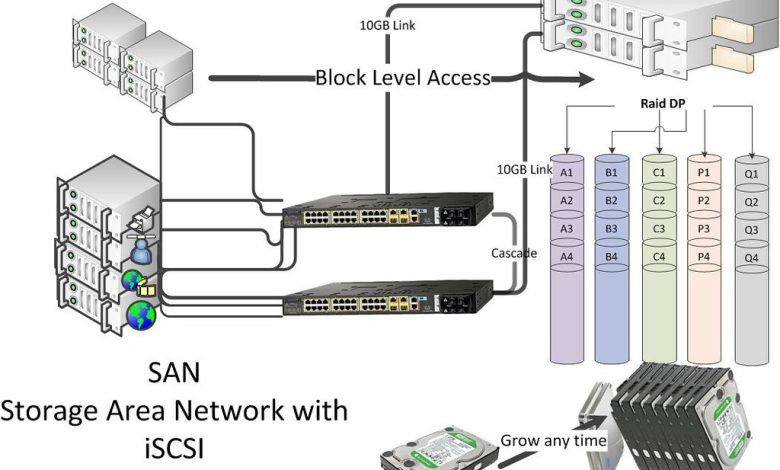Understanding Storage Area Network (SAN): A Comprehensive Guide

In the modern era of technology, data storage and management are critical aspects for businesses. Organizations generate vast amounts of data daily that need to be stored, accessed, and managed effectively. A ストレージ エリア ネットワーク(SAN) is a type of data storage network that provides centralized storage and data management services to businesses. In this blog, we will discuss SAN in detail, including its features, advantages, and how it works.
What is Storage Area Network?
A ストレージ エリア ネットワークStorage Area Network (SAN) is a specialized network of storage devices that provides block-level access to data storage. The SAN consists of storage devices, such as disk arrays or tape libraries, that are connected to a network of servers or workstations. It enables servers to access shared storage devices as if they were locally attached. SANs are usually used in enterprise environments where high-performance storage is required.
How does Storage Area Network work?
A SAN works by connecting storage devices to a network of servers or workstations using Fibre Channel (FC) or iSCSI (Internet Small Computer System Interface) protocol. FC is a high-speed network technology that provides high-bandwidth, low-latency, and reliable connectivity between storage devices and servers. iSCSI is a TCP/IP-based protocol that allows SCSI commands to be sent over the network.
SAN architecture is designed to be scalable, highly available, and fault-tolerant. The SAN can be configured with redundant components, such as redundant controllers, switches, and power supplies, to ensure that data is always available, even in the event of a component failure. SANs can also be segmented into multiple logical units, known as LUNs, which can be allocated to servers as needed.
Advantages of Storage Area Network:
- Improved Performance: SANs are designed to provide high-performance storage to applications. SANs use high-speed Fibre Channel or iSCSI protocols to transfer data between storage devices and servers, which ensures low latency and high throughput.
- Centralized Management: SANs provide centralized storage management services that allow IT administrators to manage storage resources more efficiently. SANs also provide features such as automated data backup and disaster recovery, which can be managed centrally.
- Scalability: SANs can be easily scaled by adding more storage devices or servers to the network. This allows businesses to meet their growing storage needs without having to invest in a new storage infrastructure.
- Improved Data Availability: SANs provide features such as redundant components and data replication, which ensure that data is always available, even in the event of a component failure.
- Cost-Effective: SANs are a cost-effective solution for businesses that require high-performance storage. SANs enable businesses to share storage resources across multiple servers, which reduces the need for dedicated storage devices for each server.
Disadvantages of Storage Area Network:
- Complexity: SANs can be complex to set up and manage, requiring specialized knowledge and expertise.
- Cost: SANs can be expensive to set up and maintain, as they require specialized hardware and software.
- Security: SANs can be vulnerable to security threats, such as unauthorized access or data theft. Appropriate security measures must be put in place to protect the data stored on a SAN.
Conclusion:
In conclusion, Storage Area Network is a specialized network of storage devices that provides centralized storage and data management services to businesses. It enables servers to access shared storage devices as if they were locally attached. SANs provide numerous benefits, such as improved performance, centralized management, scalability, improved data availability, and cost-effectiveness. However, SANs can be complex to set up and manage, expensive, and vulnerable to security threats. Despite these challenges, SANs remain an essential technology for businesses that require high-performance storage and data management services.








